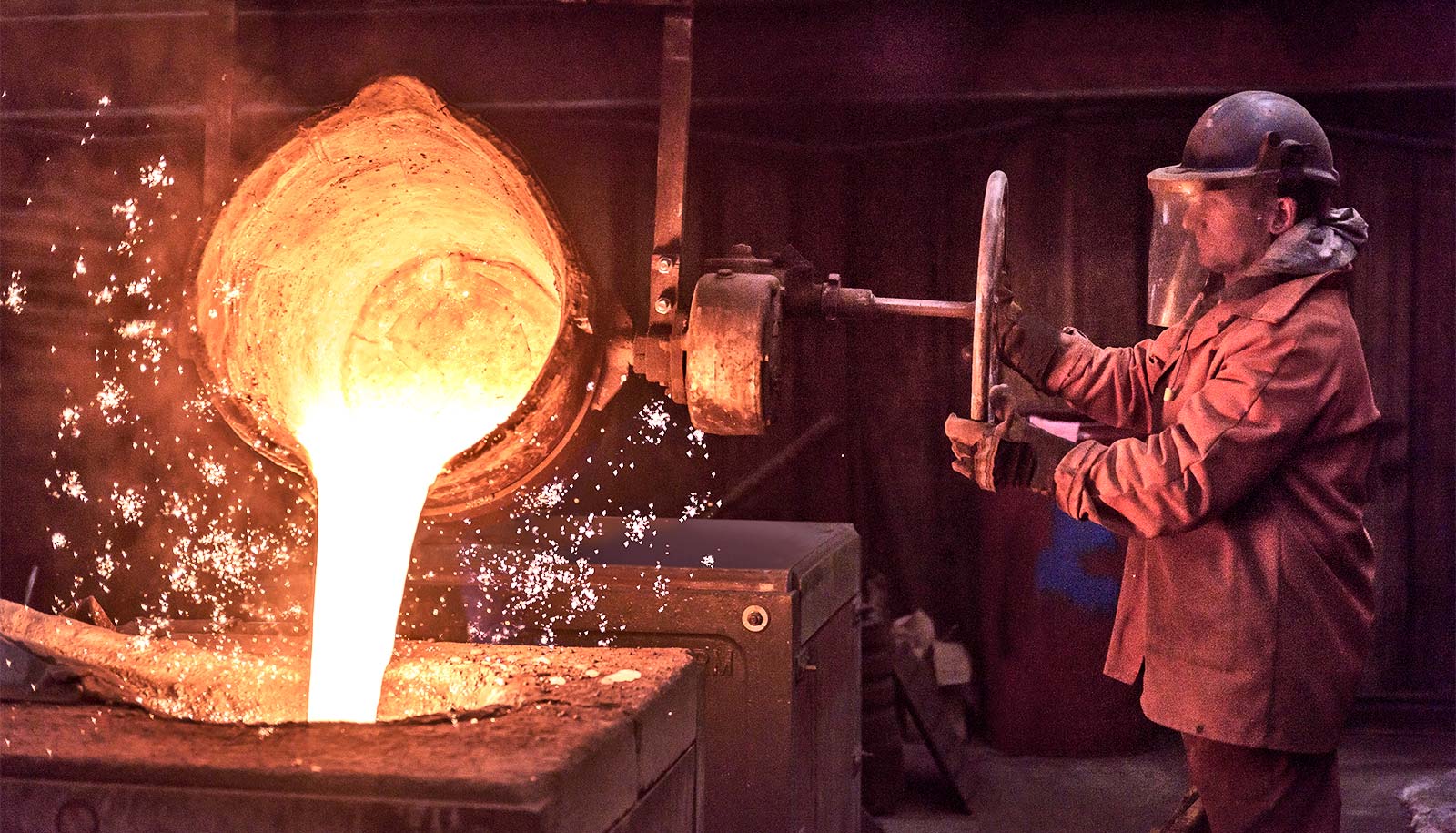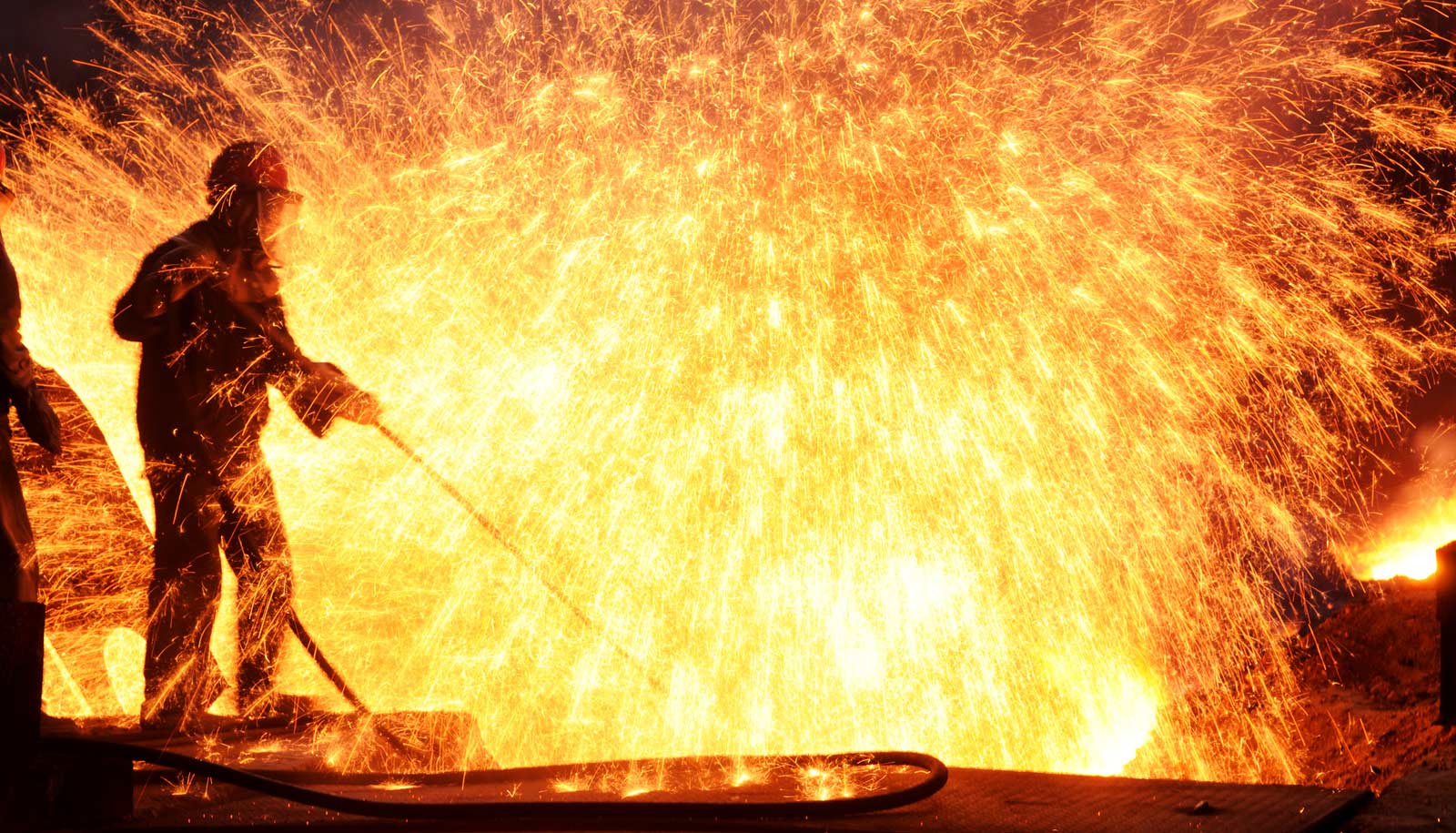Something unexpected happens to the melting point of metals under extremely high pressure, a new study suggests.
Generally speaking, a metal’s melting point tends to increase with pressure, says Axel van de Walle, a professor in the School of Engineering at Brown University who oversaw the new research. But there’s been growing evidence that in alkali metals (a group that includes sodium and lithium), the melting point actually starts to decrease above a certain critical pressure, a phenomenon called re-entrant melting.
The new research shows that re-entrant melting likely goes well beyond the alkali group.
“What we show in this paper is that re-entrant melting is actually a feature of many—and perhaps most—metallic elements,” van de Walle says. “These findings are surprising because a decrease in melting temperature with pressure implies that the liquid becomes denser than the solid. That’s a phenomenon that’s well known in the case of water, but hadn’t been predicted for dense metals.”
For the study, which appears in Physical Review B, the researchers used quantum mechanical computational methods to simulate the behavior of atoms in a metal at various temperatures and pressures. The calculations showed that for alkali metals like sodium, re-entrant melting starts to happen at pressures around 30 gigapascals (about 300,000 times Earth’s atmospheric pressure).
But the research also showed, for the first time, that other metal could in theory undergo re-entrant melting at extreme pressures. Magnesium, for example, would undergo re-entrant melting at around 300 gigapascals. For aluminum, pressures around 3,500 gigapascals would induce re-entrant heating.
That even relatively dense metals could have a liquid phase that’s denser than solid phase is surprising, the researchers say.
“Metallic elements typically have such a close-packed structure that it seems impossible for the liquid phase to be denser than the solid—until one actually computes these densities,” says Qijun Hong, a research associate at Brown.
There’s currently no way on Earth to reach the extreme pressures that induce re-entrant heating in any metals beyond the alkalis, the researchers say. But the findings could have implications for understanding the composition of large exoplanets—planets beyond our solar system.
“It raises the possibility that the interior pressures of large planets could be sufficient to induce re-entrant melting,” van de Walle says. “That means their cores would consist of layers in a liquid-solid-liquid sequence, rather than the more common liquid-to-solid sequence.”
Funding for the research came from the National Science Foundation and the Office of Naval Research.
Source: Brown University


